Submitted by WA Contents
Parallax designs black weekend house raised on slender stilts within coconut trees in Bangalore
India Architecture News - Apr 03, 2020 - 16:57 19929 views
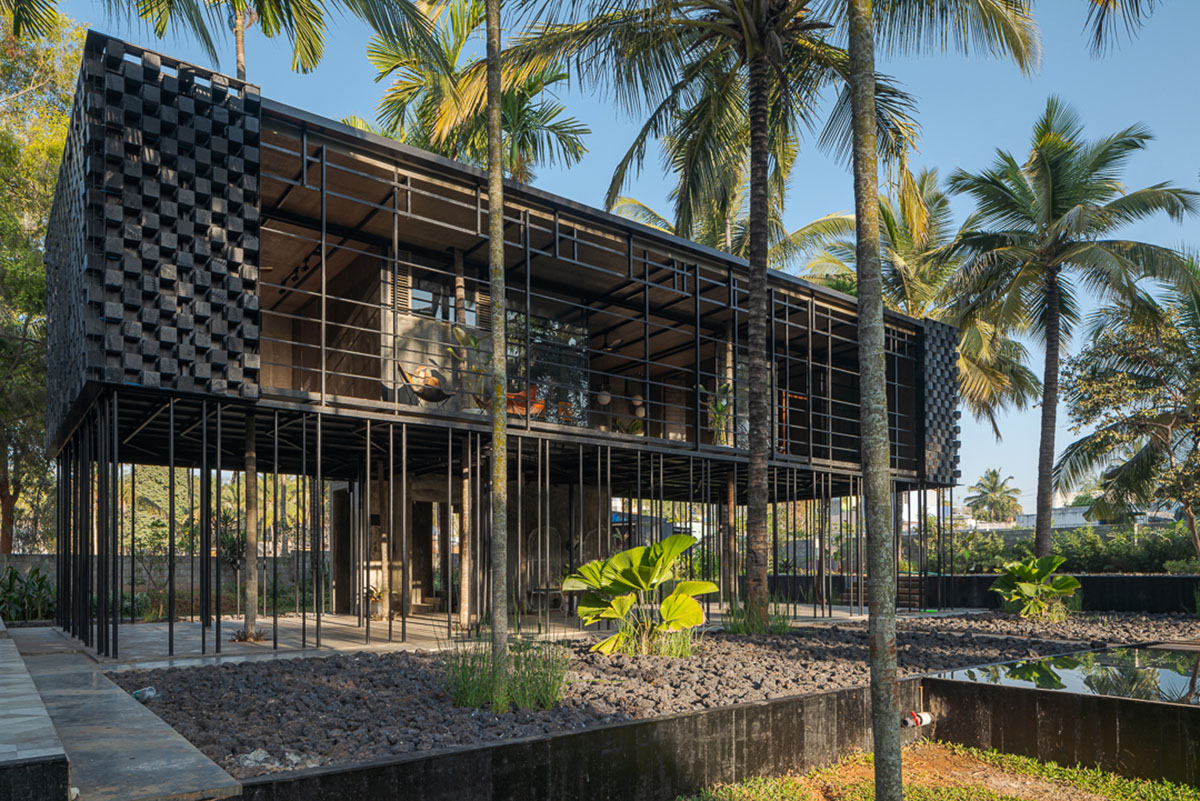
Bangalore-based architecture firm Parallax has built a weekend house raised on slender steel stilts on a plot within coconut trees in Bangalore, India.
Located on the outskirts of Bangalore, the site is spread across 1.5 acre of flat land with coconut trees covering the whole site in a grid manner.
Named House on Pipes, the black rectangular house touches the ground in minimum footprint. The aim of the architects was to design a weekend getaway space accommodating a 2-bedroom space within a limited budget, without disrupting the nature.
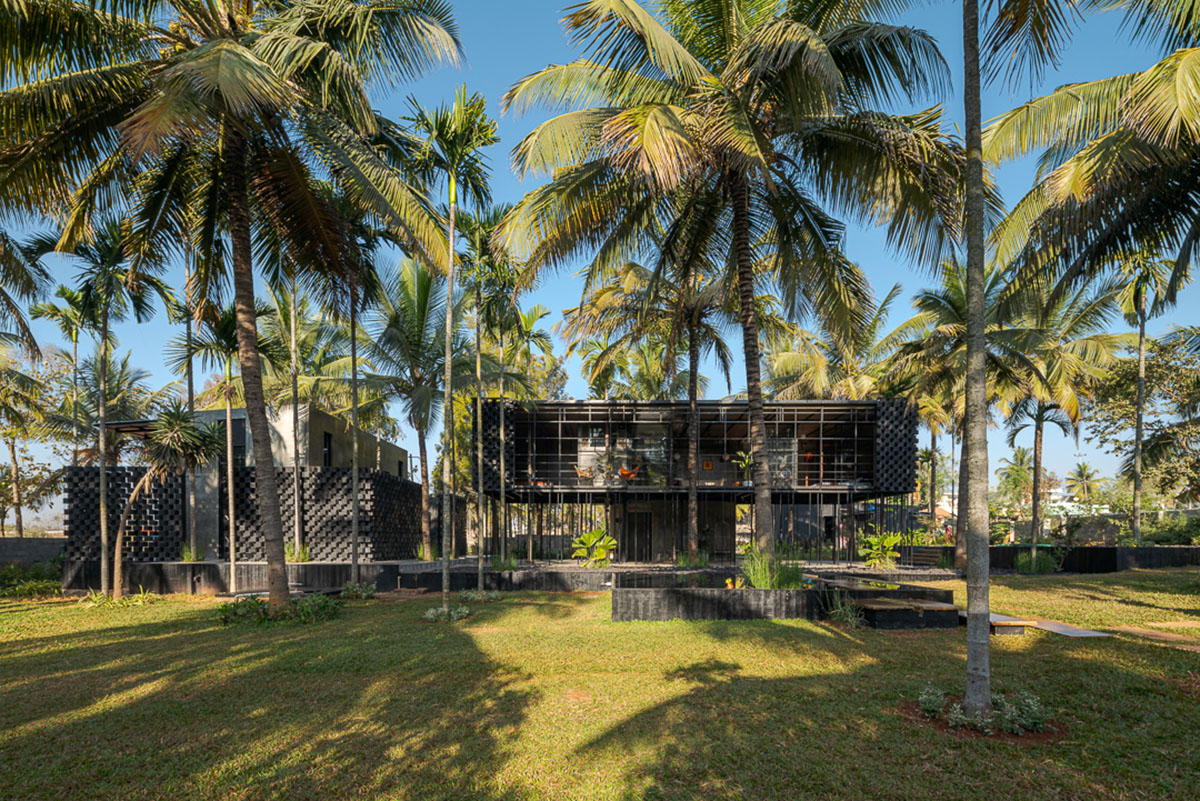
"The initial thought was to plant a built form with minimal contact to the soil. This played an important role in the selection of materials thus addressing the concept," said Parallax.
"Access to the space can be from any direction, with landscape serving as a natural pathway."
"The linearity, sleek supports and wide canopies of the trees within the site, inspired us to begin with the concepts of having similar linear supports elevating the built space and minimal contact to the land," added the office.
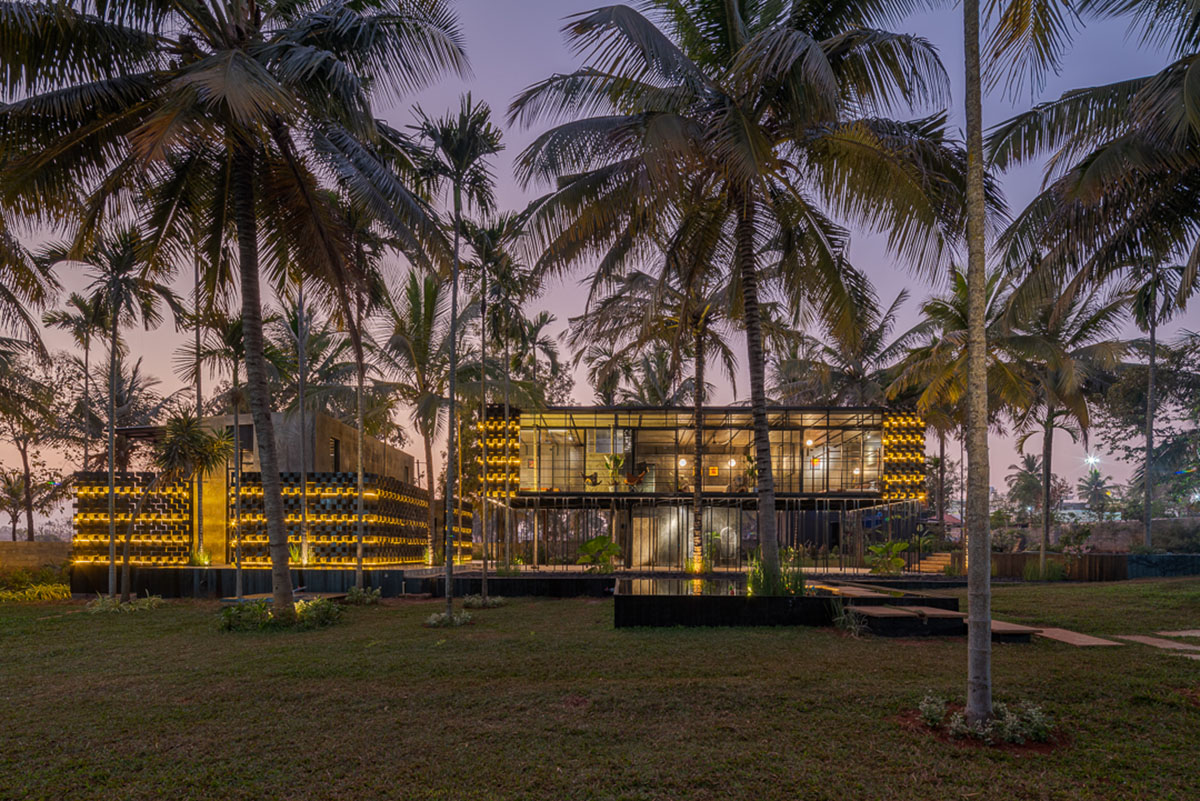
Designed as a light structure, the building is purely based on previously proposed landscape space. In doing so, both the built and unbuilt are celebrated together as a whole.
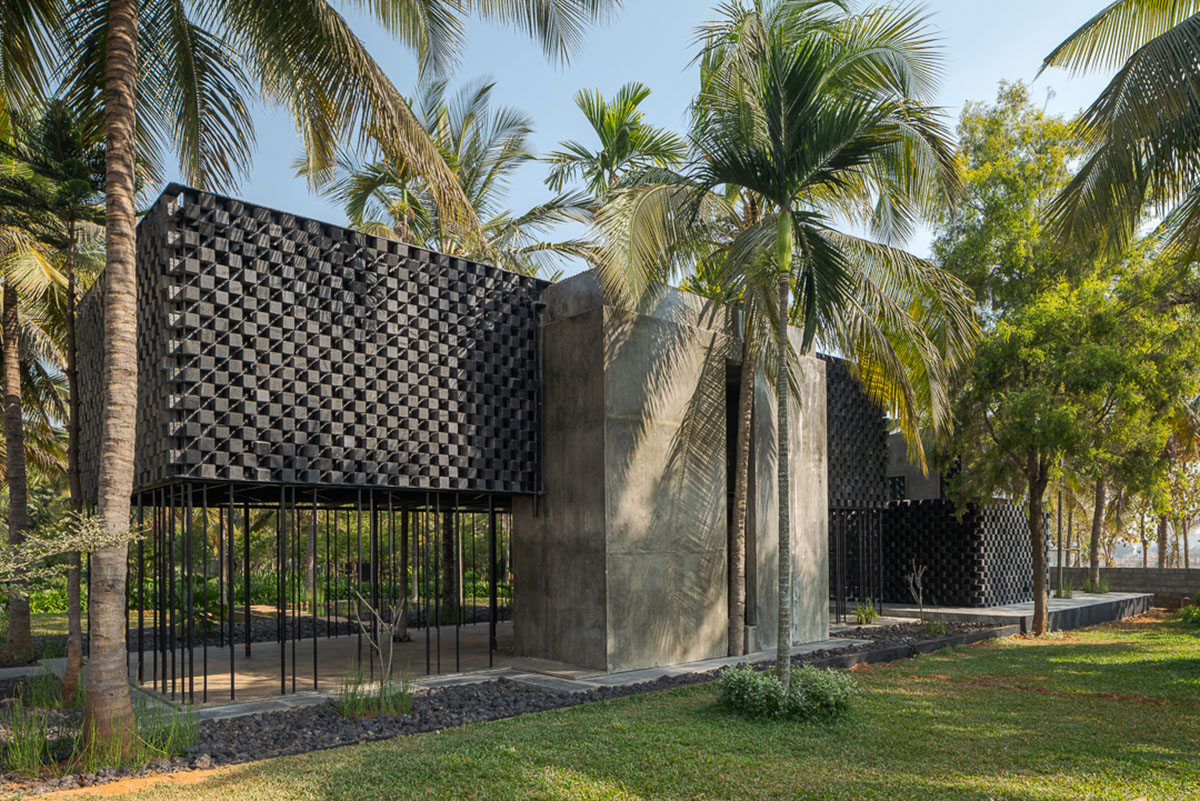
The architects' aim was to build a home amidst the greenery for the weekends, away from all the hustle and day to day commitments. The one and half acre of land acquired, thus took on the design process beginning with landscape elements filled with lush green and an existing stepped well.
It seems that the load is distributed on a concrete support in the center alongside slender steel pipes. However, from the front facade, the house acts like it is floating in the air.
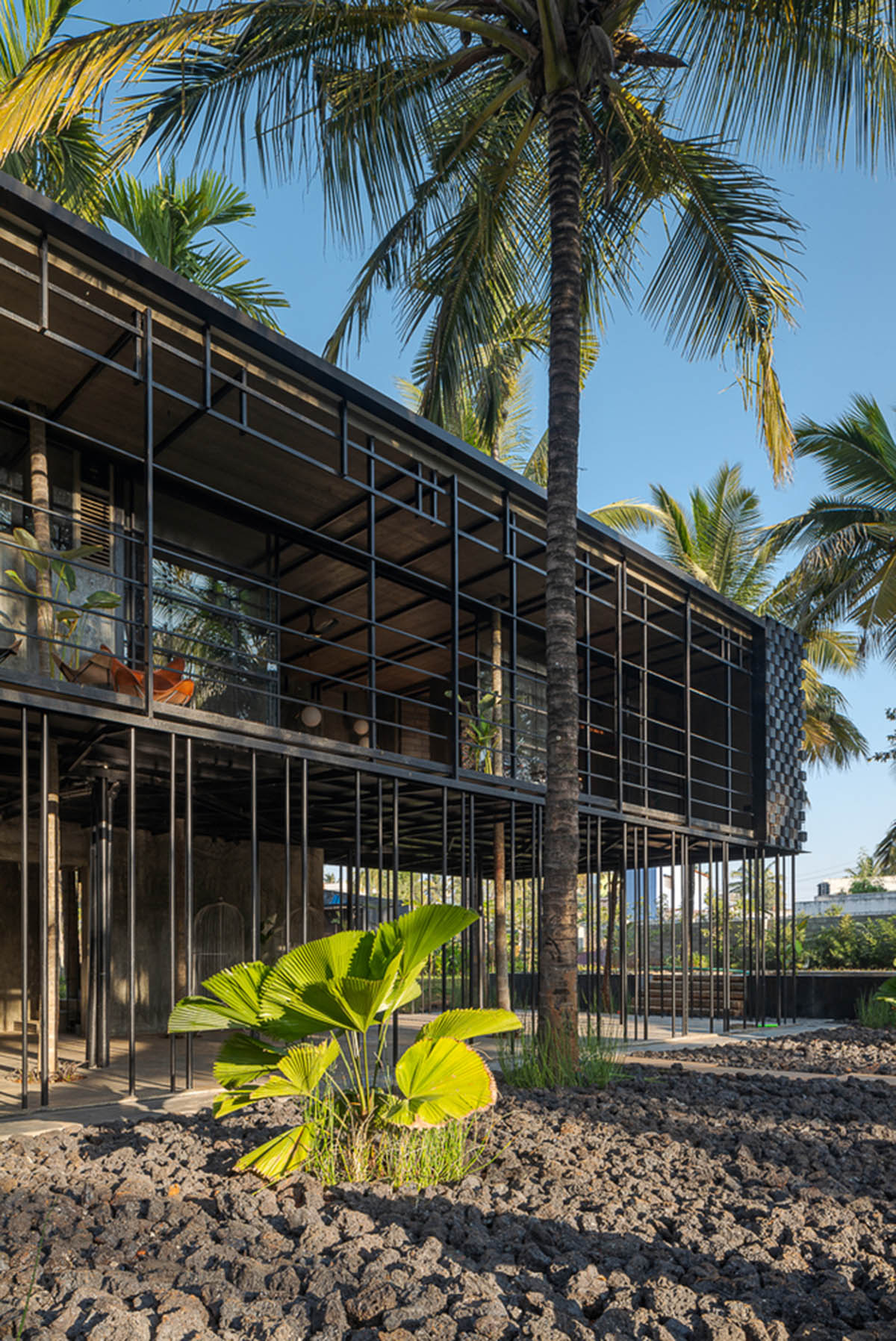
The built space is light and leaves minimal footprint as the material chosen to build was steel, thus elevating the building. This aided the landscape to continue its journey throughout the site.
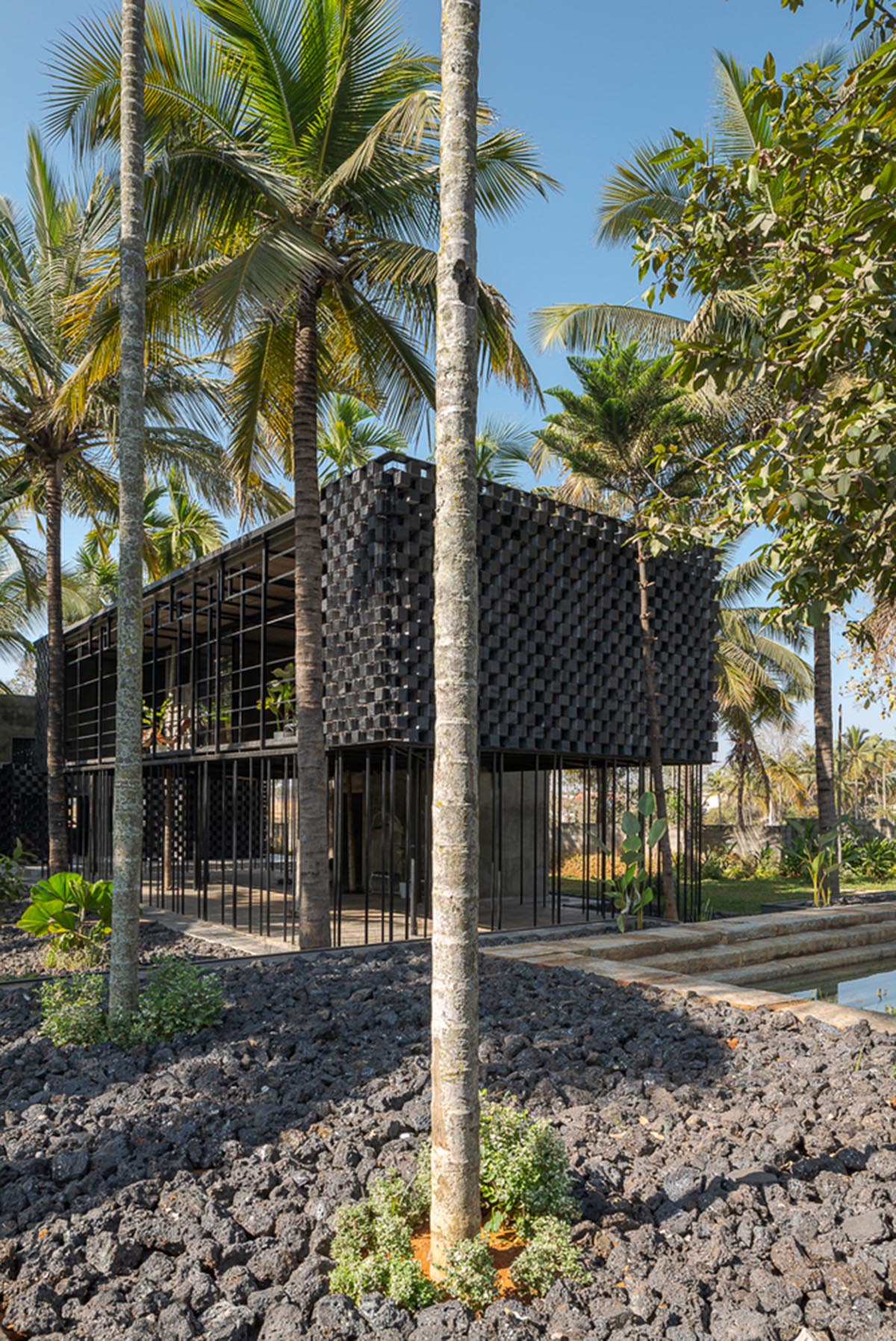
The design brings about a well balanced ratio of voids and solids, the built and the unbuilt, thus designing this project was a challenge as the balance of the same came with a conditions applied tag of having very minimal surface area used for built environment.
The design team along with their structural consultant arrived at the site location with efficiently trained laborers to make the flimsy yet strong built environment a possibility.

Nature the process of a seed that transforms into a seedling, a plant and then into a tree by taking the help of its surrounding elements and growing out into roots and shoots that help support it, stand on the ground and prepare food for its progress and wellbeing.
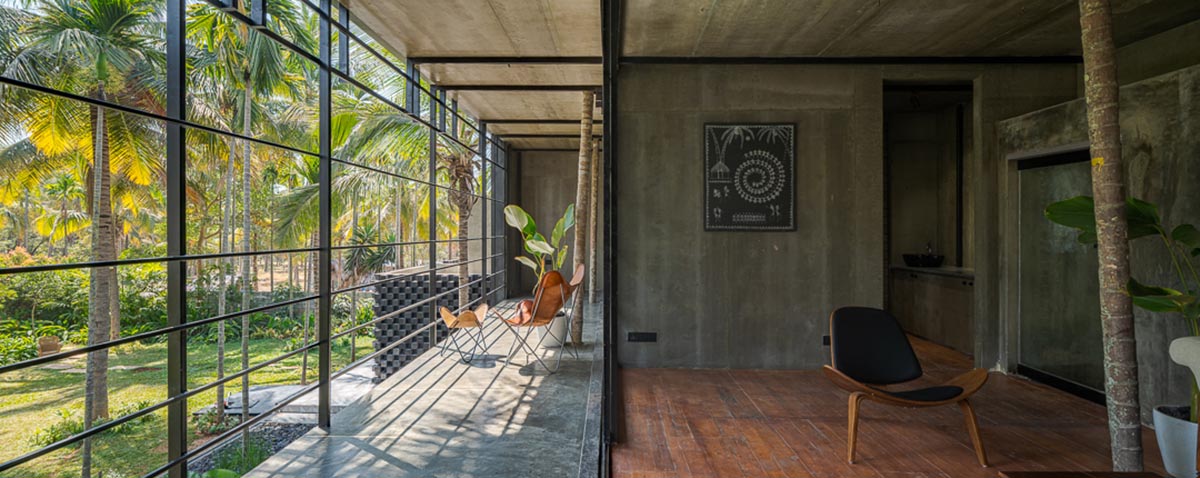
"The shoots go up seeking the fresh air and sunlight preparing food while the rest of the plant is tensed as its lower half of the body is stationery and yet the roots burrow deep down into the soil with rigidity," added the firm.
"The shoots of a plant branch out and twist and turn into different planes and axises all with one single yet sturdy trunk taking the load."
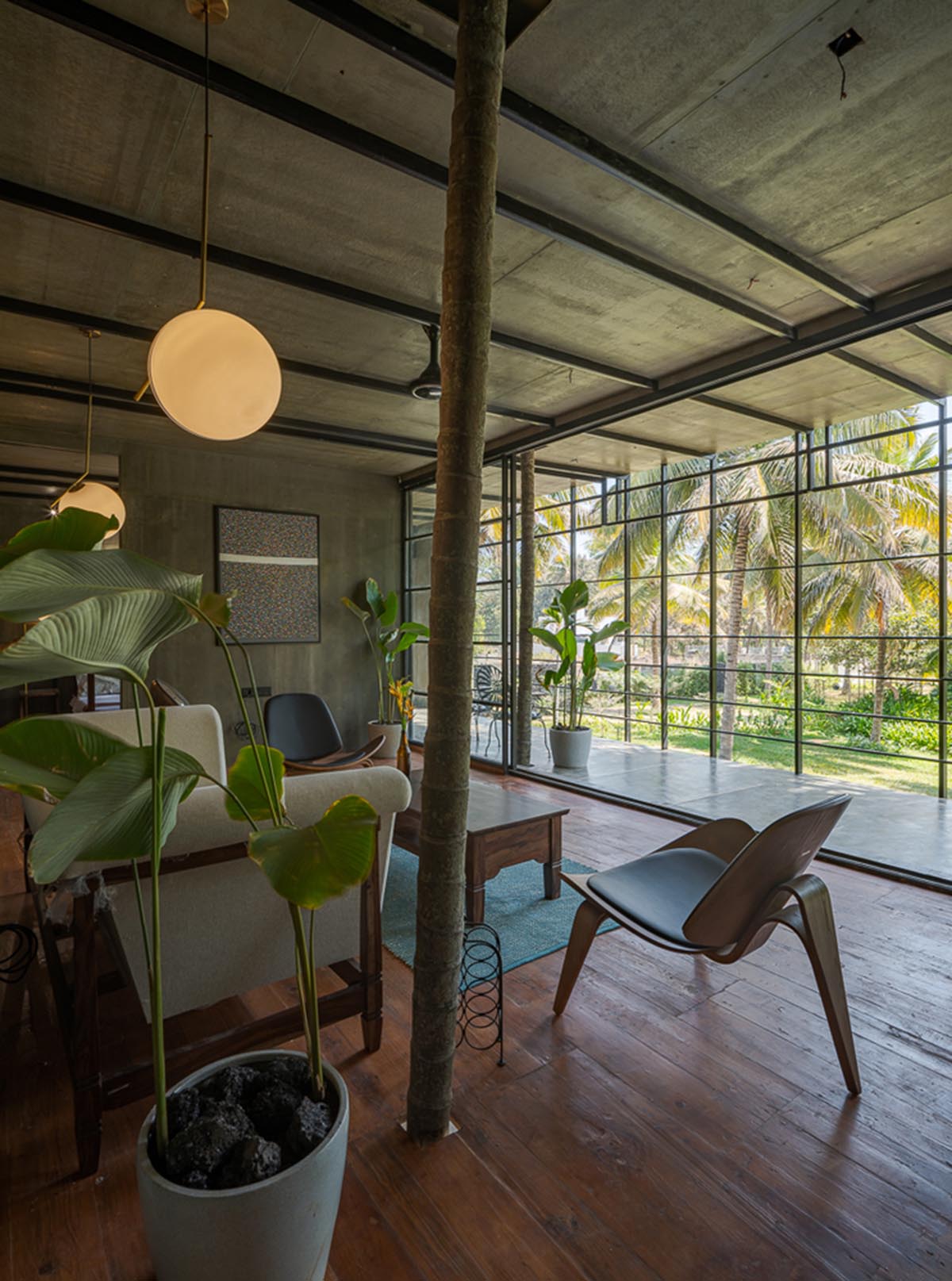
A similar principle has been applied to ensure the structural stability of the built space; using built yet stable space to support the unstable spaces.
The aforementioned steel pipes are in a staggered formation on the surface along the periphery so as to provide rigidity stiffness and stability to the above living space.
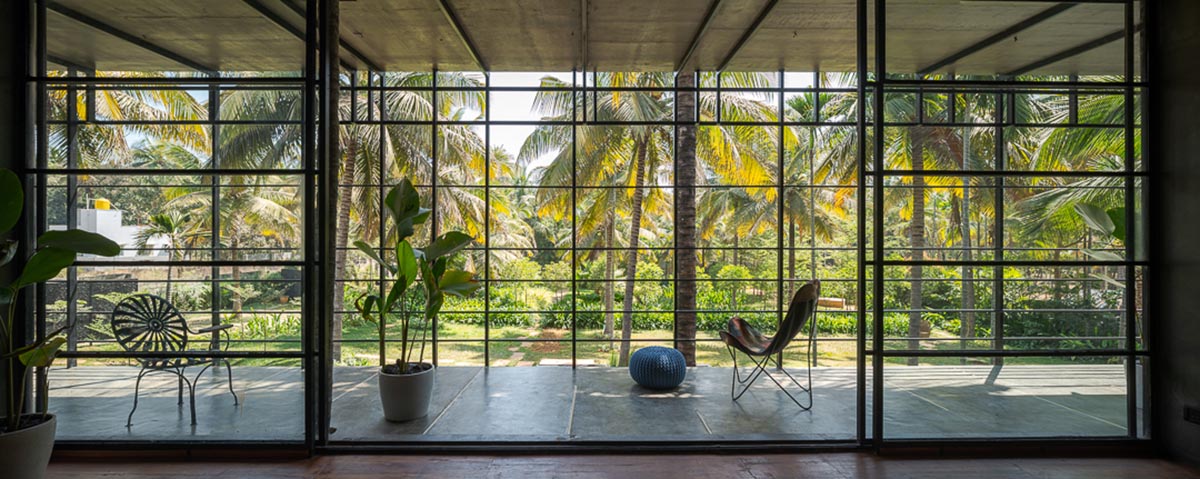
This living space is covered by three layers of materials, the first being bison board, the middle sandwiched layer, a sheet of glass wool for thermal comfort and protection chosen in accordance with the climatic conditions of the site. The outermost layer is however capped using fly ash blocks to bring the temperature down to a cool and breathable condition.
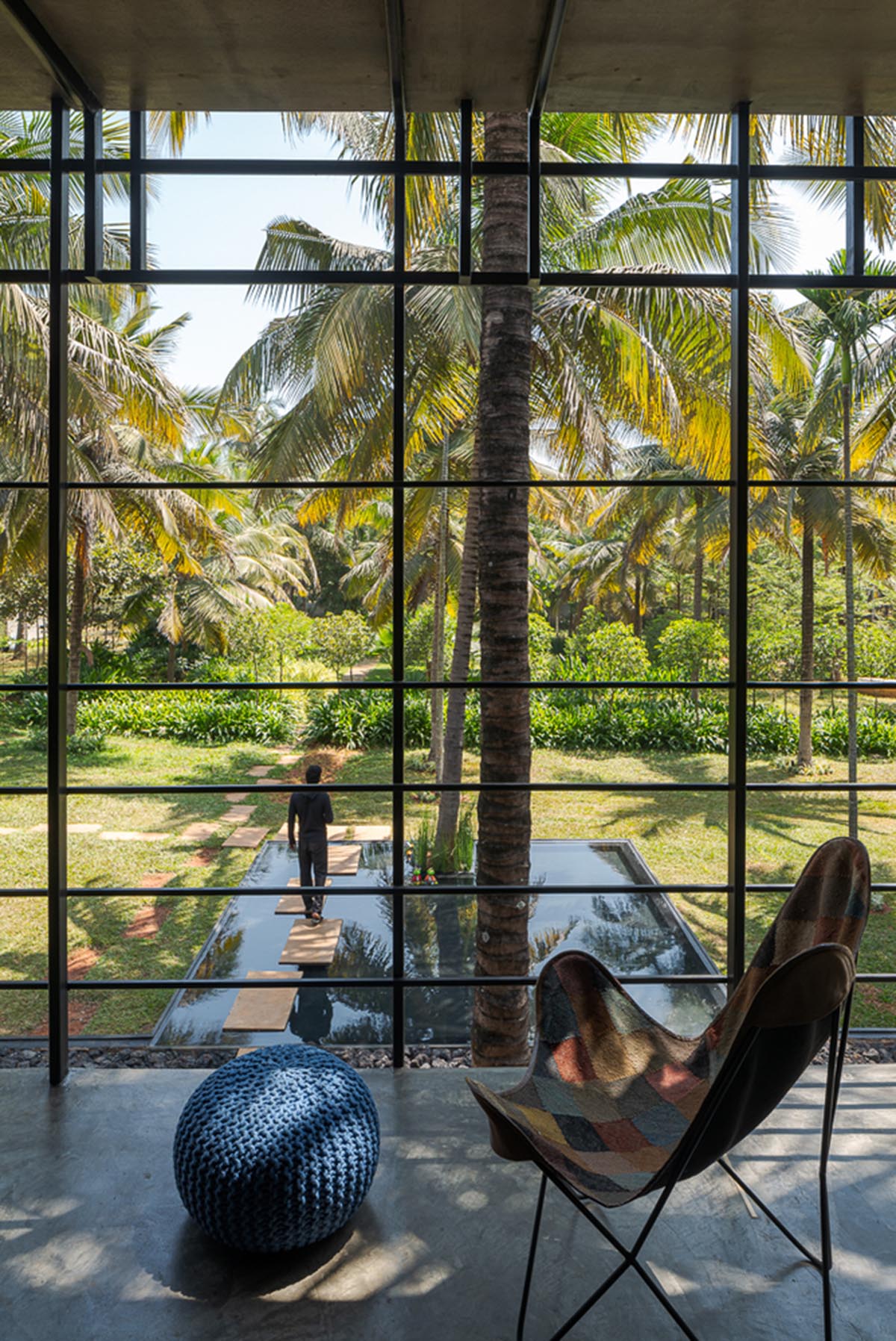
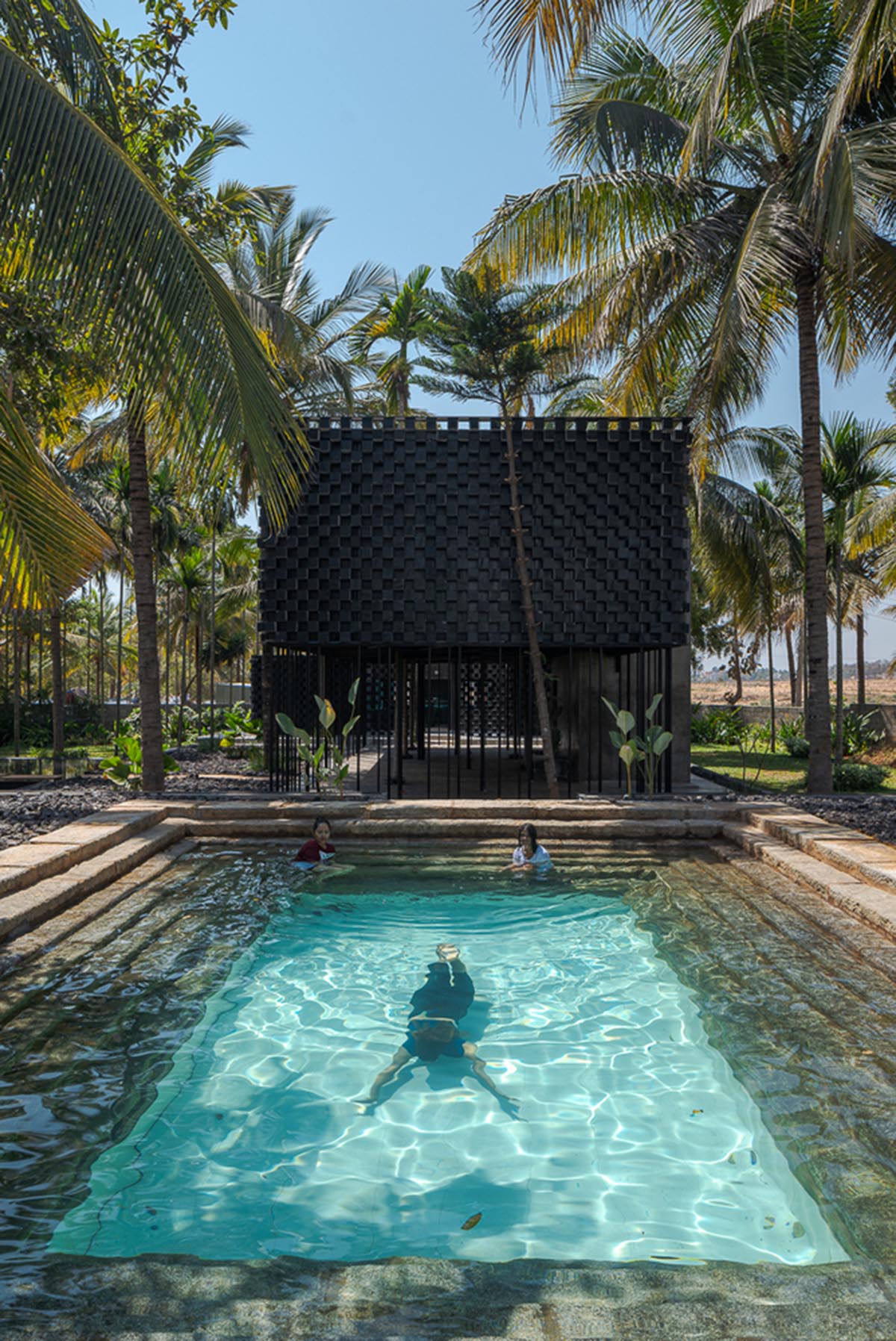
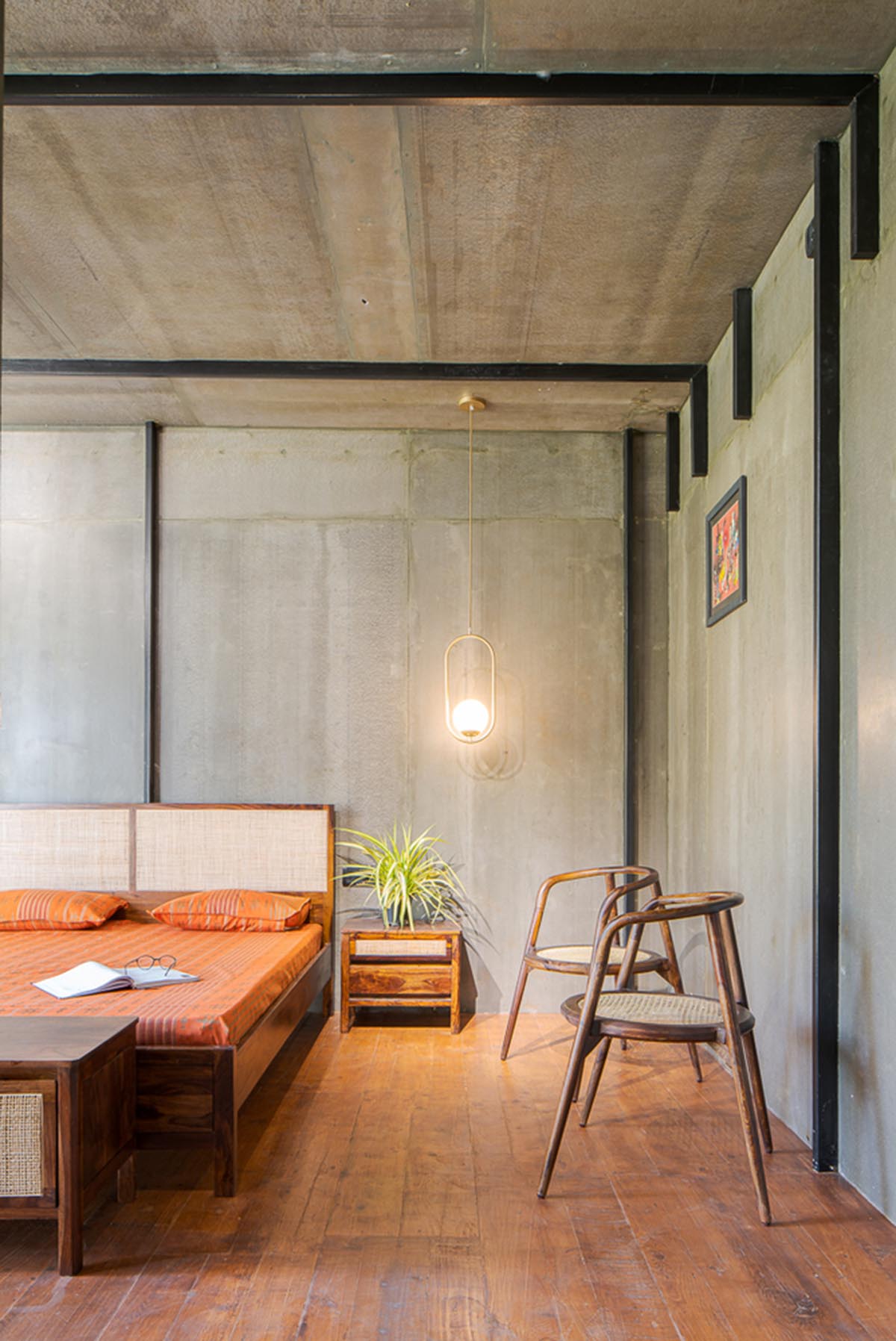
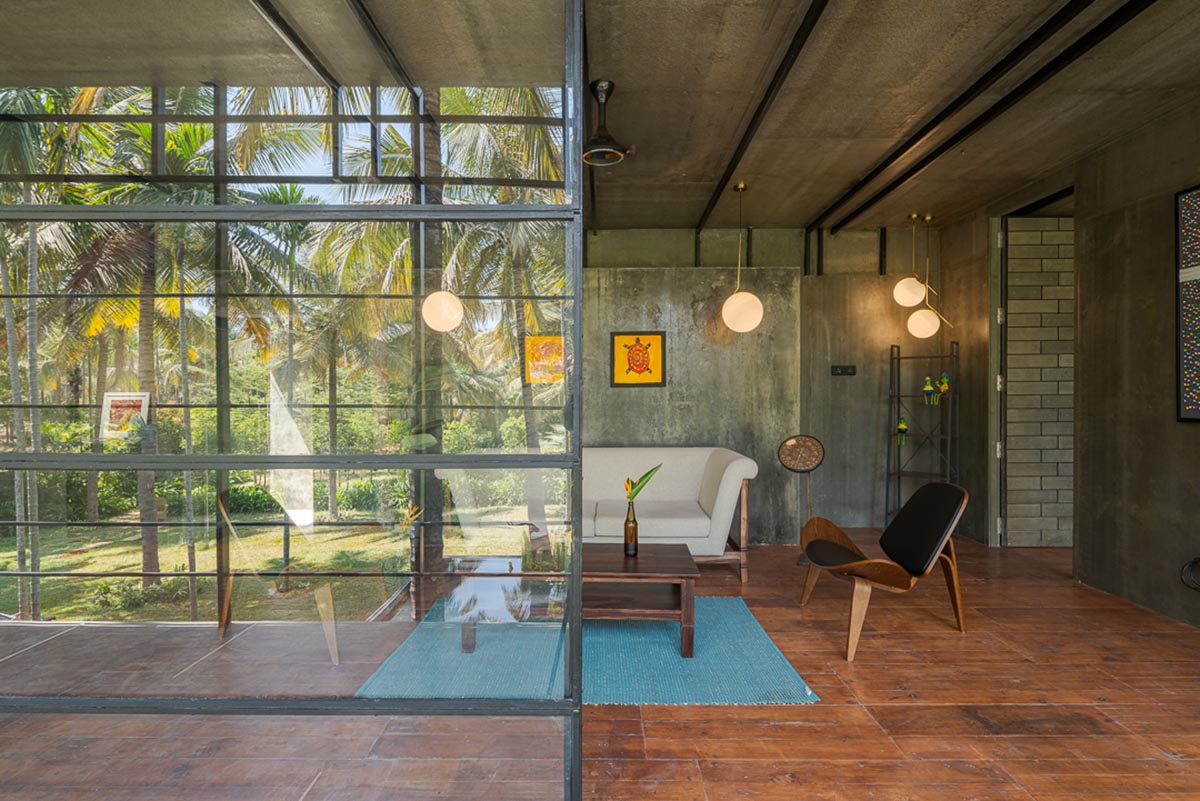
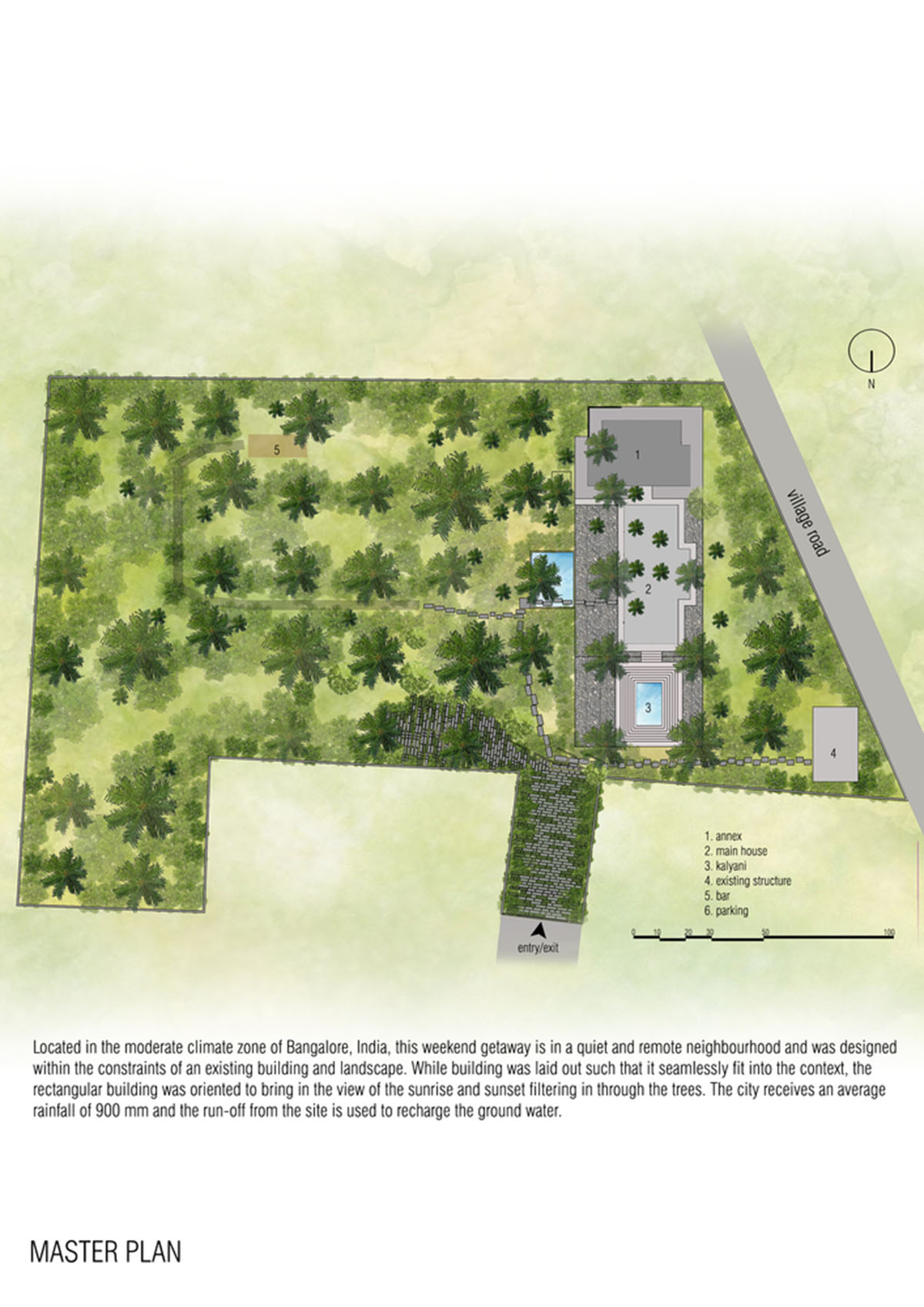
Masterplan
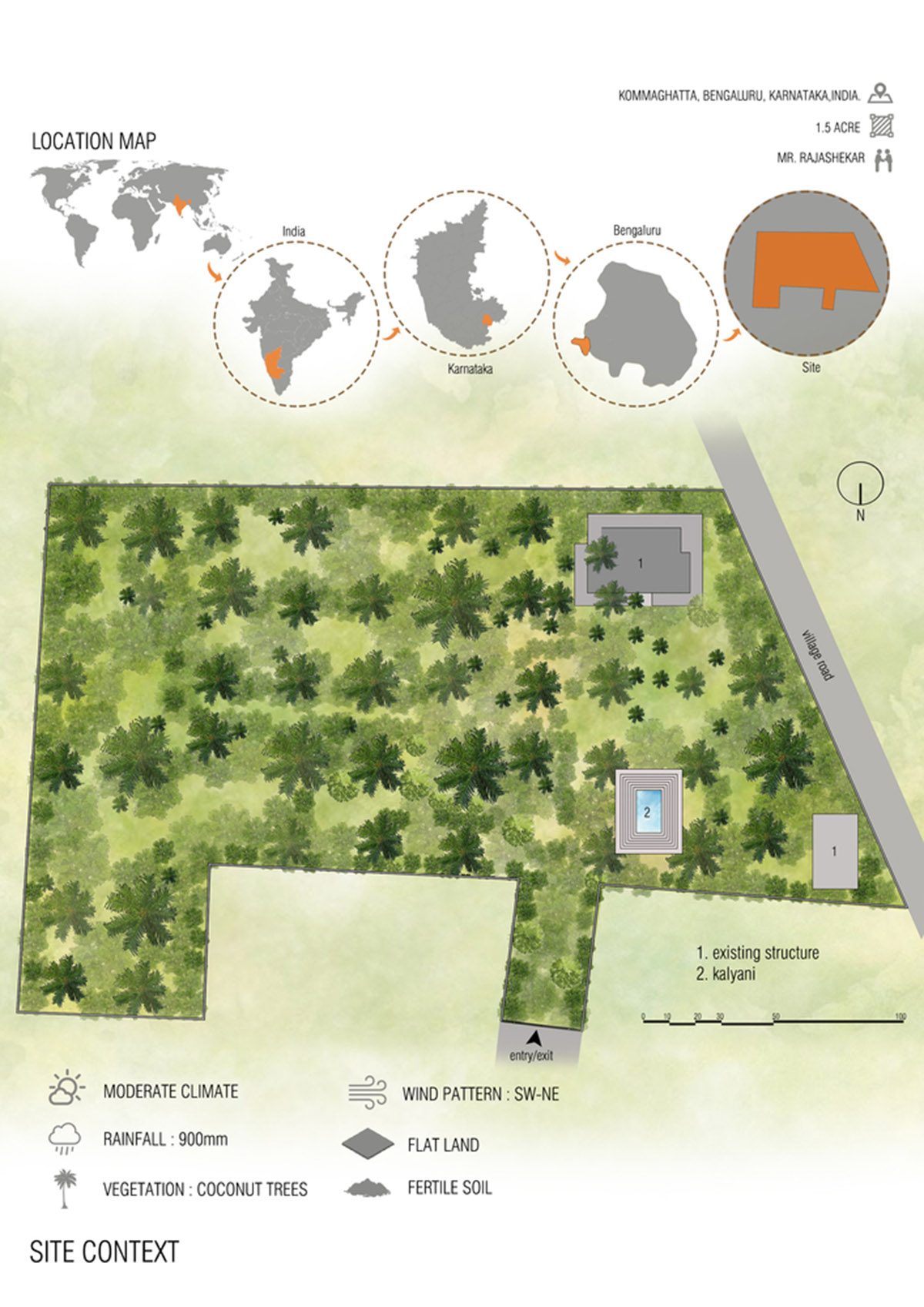
Site plan
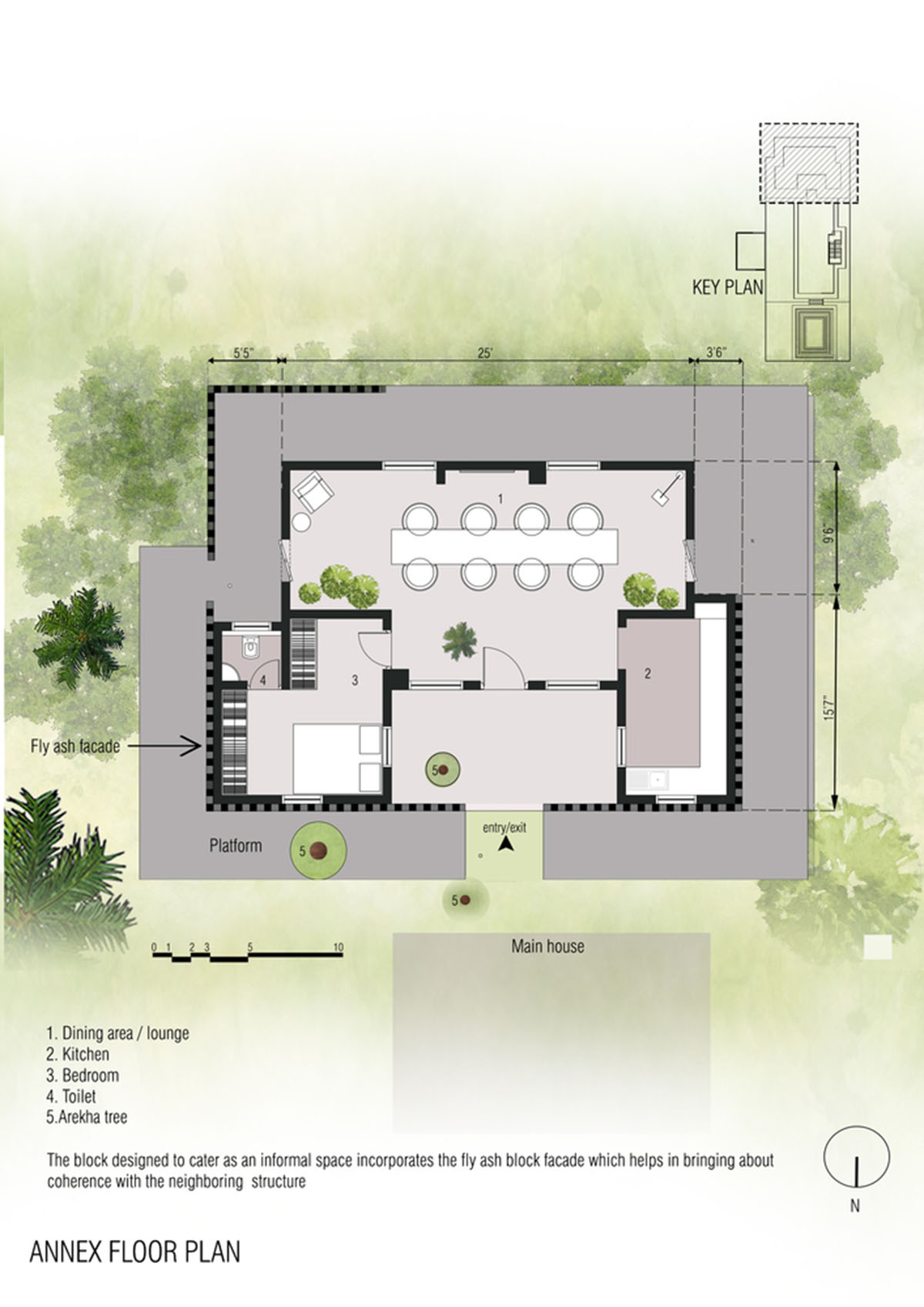
Annex floor plan
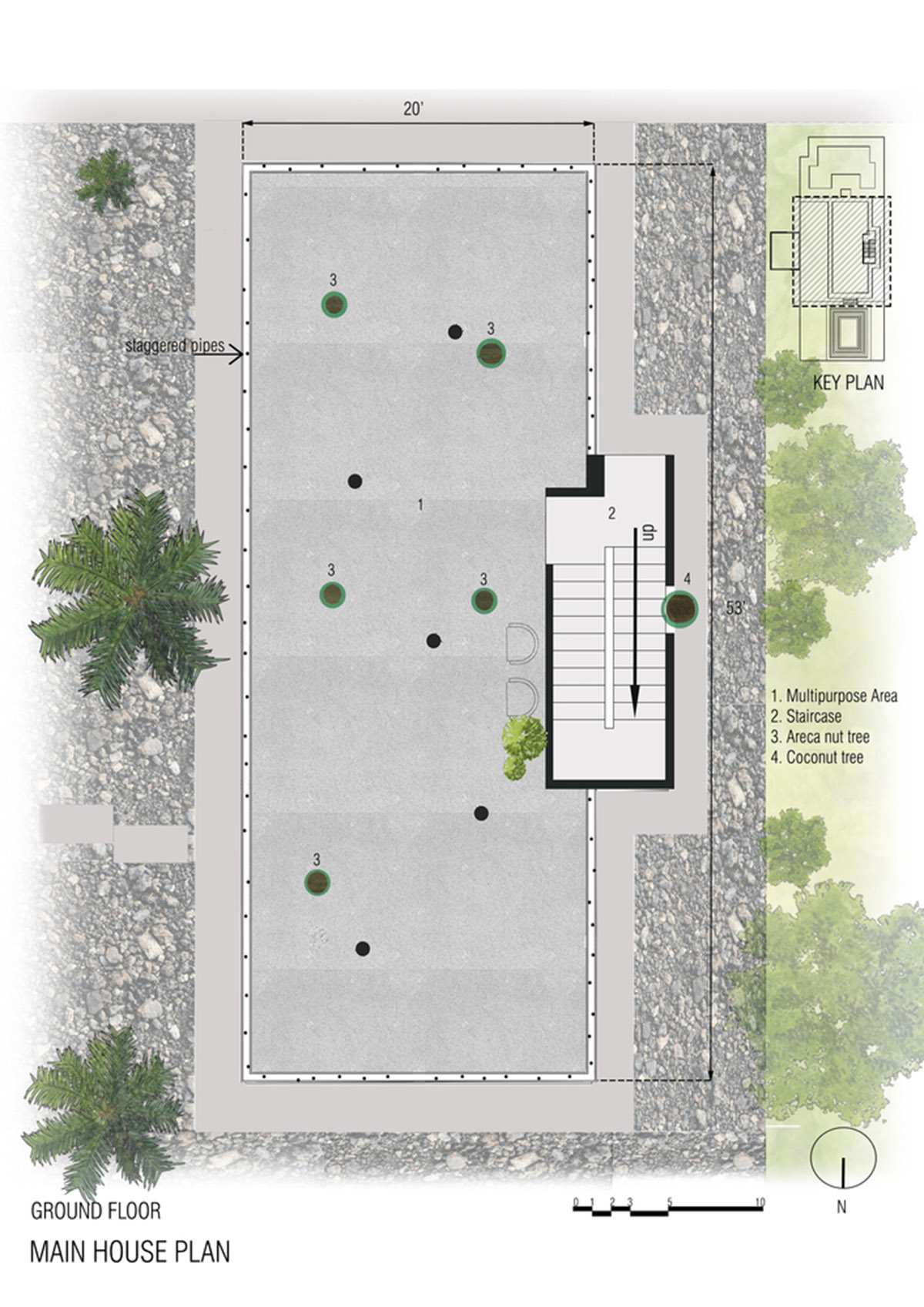
Ground floor plan

First floor plan

Sections

Process
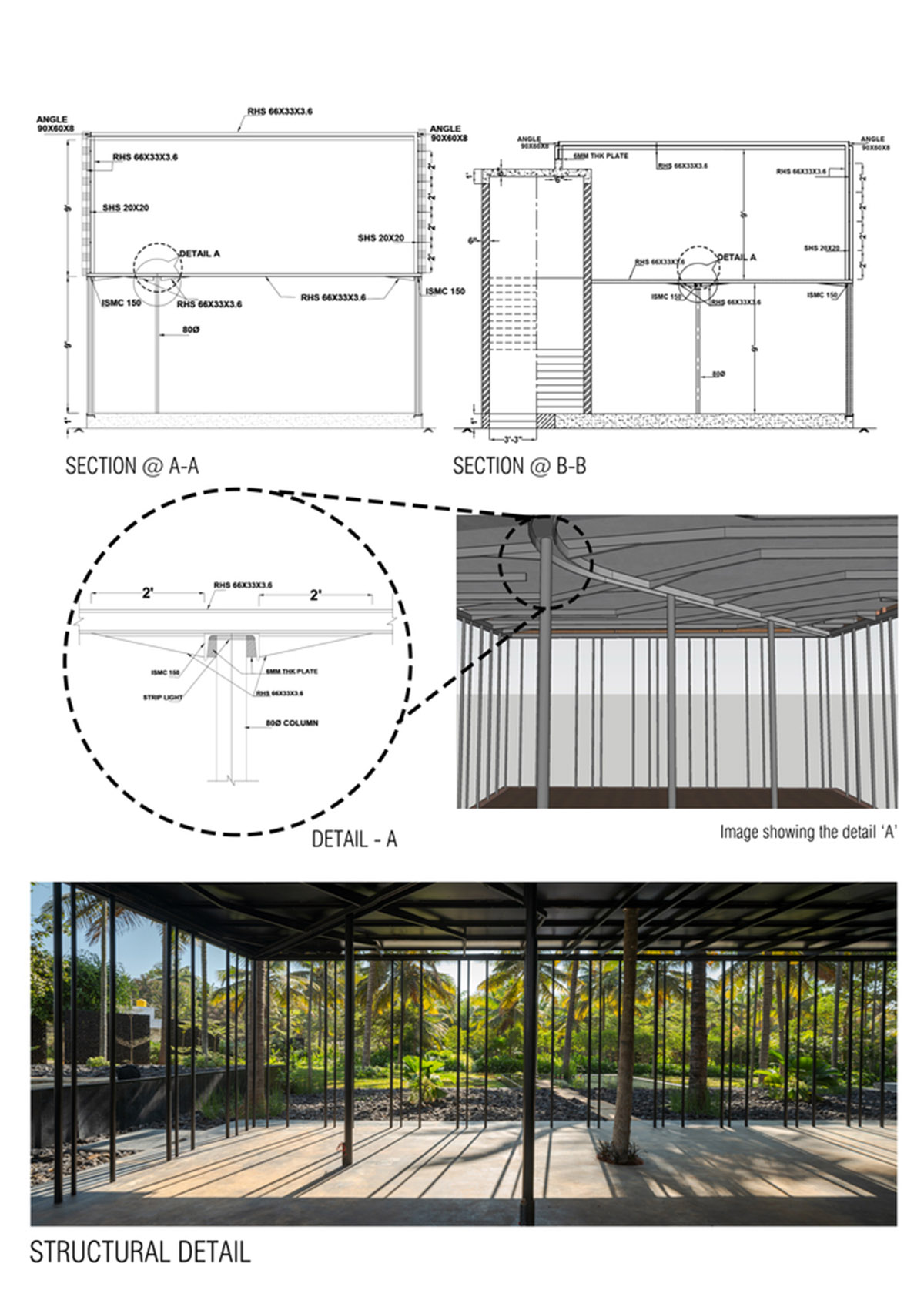
Structural detail

Structural detail

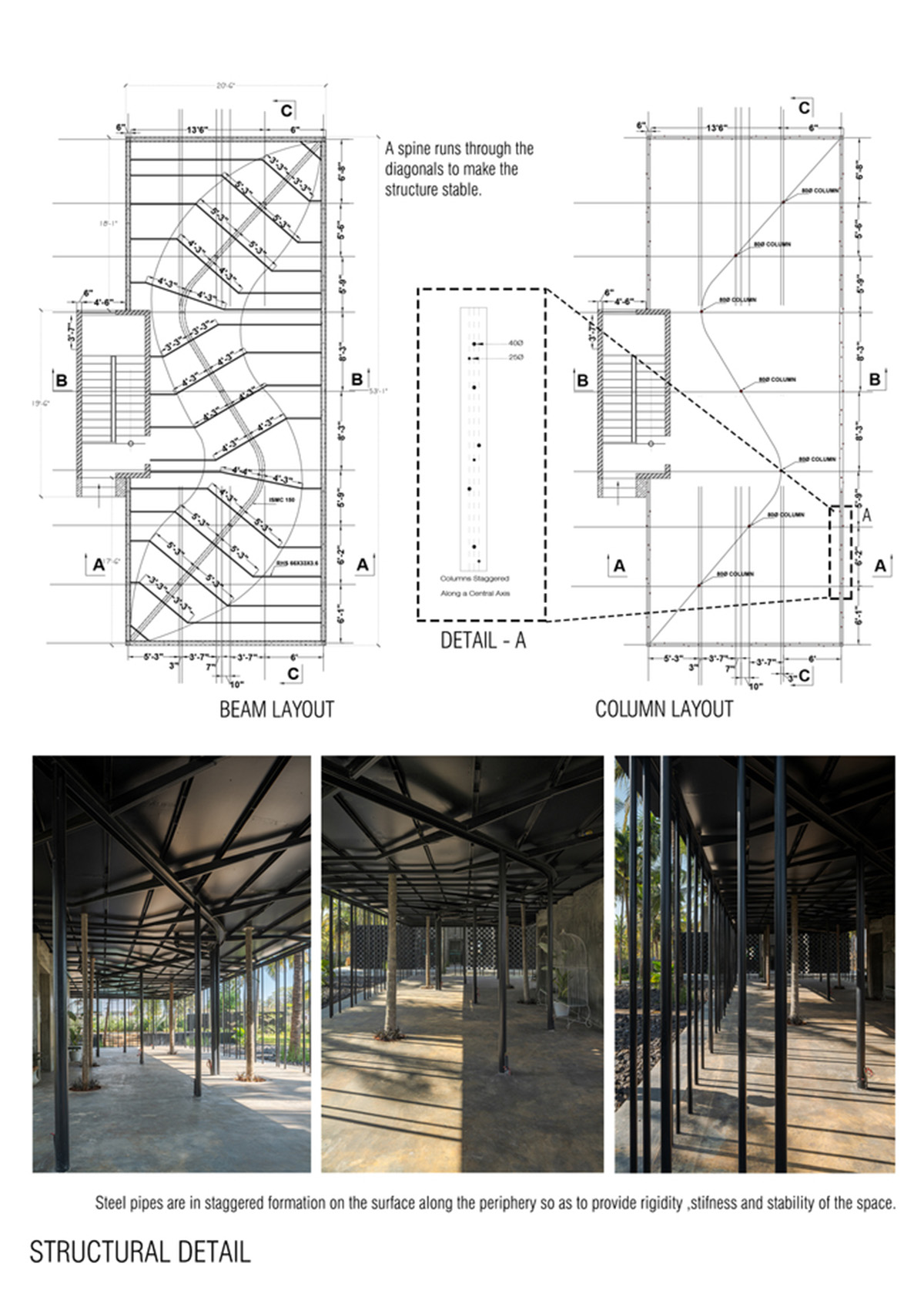

Project facts
Project name: House on Pipes
Architects: Parallax
Size: 6069.0 ft²
Location: Bangalore, India
Date: 2020
All images © Praveen Mohandas
All drawings © Parallax
> via Parallax
